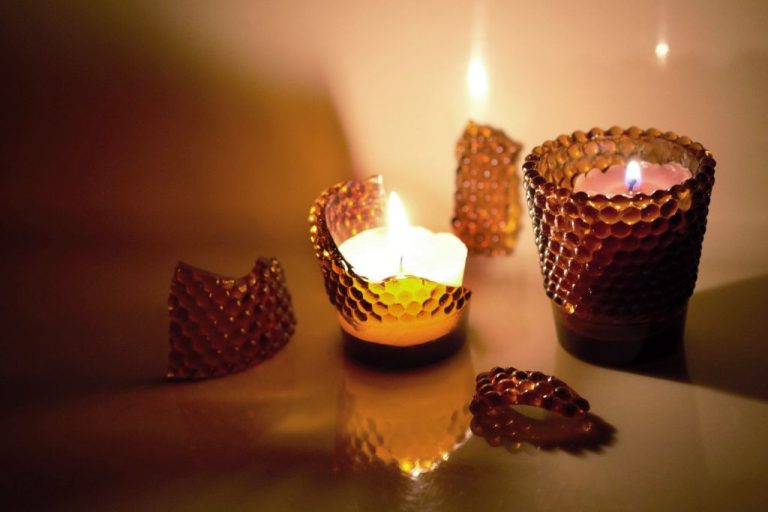What Does The Candle Light Symbolize When Someone Dies?
Since ancient times, candles have been an essential part of rituals and ceremonies surrounding death. A small, flickering flame in the darkness represents many different spiritual meanings and symbolism when a friend or loved one passes away.
In this article, we will explore the history and examine why candles became so integral to honoring the deceased and providing comfort for the living.
History of Candle Use in Funerals
The practice of placing candles by the deceased has ancient origins across many cultures and religions. In early Christian, Jewish, Hindu, Buddhist and many pagan funeral customs, candles were lit near the body to symbolize light in the transition to the afterlife, provide comfort to the bereaved, and honor the spirit of the departed.
In Europe during the Middle Ages, tall candles called “mortuary lights” or “lych lights” burned beside the body from time of death until the funeral, likely evolving from a mix of Roman funeral torches and ceremonial Easter candles. Similar lights burned in ancient Egyptian and Zoroastrian death rituals. Across South and East Asia, rituals also involved surrounding the deceased with oil lamps or candles at home altars and temples.
These traditions reflected spiritual beliefs about the soul’s journey, as well as practical concerns before modern embalming. Thus, the custom spans across early religious views of the afterlife, from hoping candle flames guarded and guided spirits, to dispelling darkness and evil. Today, candles by the casket retain layered meanings illuminated by this history.
Candles as Light and Guidance
In many cultures and religious traditions, the flames of candles symbolize providing light and guidance to the deceased as they transition into the afterlife. This symbolizes helping someone find their way along their spiritual journey and path of the soul.
Candles Marking the Journey
Candles have been used to mark the journey into death as a source of light to guide the departing soul into the afterlife. In many cultures, candles are lit to symbolize lighting the way for the deceased, providing them some comfort and guidance in their transition from this life to the next. The flickering flame is a metaphor for the light that remains as a continuing bond; those that have passed are not gone completely, but remain connected to loved ones through memory and remembrance.
Candles lit in remembrance of those who have died also help sustain their memory and the positive influence they had. The small flame represents the love that continues to burn for them, and the illumination reminds us of the ways the departed touched lives and spread light in the world. Though gone from our sight, that light endures inside those that carry on and hold the departed in their hearts. The candle flame thus serves as a quiet tribute marking their ongoing spiritual journey.
Candles in Different Cultures
The use of candles in funeral rituals spans across cultures and faiths worldwide. In Catholic traditions, votive candles are often lit beside the casket during wakes and funerals. The candles signify the light of Christ, offering hope and symbolizing prayer for the soul of the deceased.
In Jewish tradition, the yahrzeit candle is lit on the anniversary of a loved one’s death. The candle burns for 24 hours, with the flame representing the soul of the departed. Lighting the candle annually commemorates the memory of those who have passed.
In Buddhism, large butter lamps may burn for 49 days after someone dies, representing the journey through the bardo (intermediate state) towards reincarnation. The candles here symbolize enlightenment triumphing over darkness.
Across Hindu funeral rites, a ghee lamp often burns beside the body while it lies in state. This brings light to guide the transition of the soul towards its next incarnation. Here, the candle or oil lamp represents enlightenment dispelling ignorance.
Vigil Candles
Vigil candles are often lit in the room or at the place where the deceased’s body or cremated remains are being prepared or are lying-in state for friends and family to visit and pay their respects. By lighting vigil candles, mourners observe the vigil of watching over the deceased, keeping them company as they leave this world and transition to the next. The candlelight also symbolizes keeping watch throughout the night so the deceased is never left alone, never left in darkness during this time.
In some Latin American countries, mourners hold a 24 hour candlelight vigil or velatorio before the deceased is buried, sometimes with prayers said over the body throughout the night. By keeping candles burning constantly in the room, mourners surround the departed with light and guidance on their journey as their spirit separates from their physical form.
Memory Candles
When a loved one passes away, it is common to hold memorial services and light candles in their memory. These memory candles serve as a touching tribute, representing the light and essence of that person that will live on despite their physical absence.
Lighting a candle in someone’s memory creates a space to honour their life, reflect on cherished moments you shared together, and pay respect to the legacy they have left behind. It often takes place during memorial vigils, funerals, or personal moments of reflection after someone has passed away. The flickering flame allows people to symbolically share their thoughts and sentiments, illuminating the warm memories and love still burning for that person.
This tradition connects us to ancient customs of using fire to represent one’s spirit, a shining flame signifying the soul living on. Lighting candles for someone who died provides comfort, allowing us to feel that we are remembering them in a meaningful, almost spiritual way. It brings people together through stories, tears, and reminders of that person’s unique spirit. In many cultures, traditions carry on of lighting these memory candles on significant anniversaries or days important to that individual.
When we light a candle in honor of someone no longer with us in physical form, it creates a reflective space for us to recognize their enduring impact on our lives. That flame pays tribute to all the ways – big and small – that they lit up our world while they were here to share in it by our side. Illuminating the darkness of loss, memory candles allow beloved souls to shine bright.
Candles as Prayer
Lighting a candle is often seen as a symbolic way to send up prayers, petitions or remembrances. The flame of a lit candle is thought to represent the prayer or intention itself, rising to the heavens. The concept comes from early spiritual beliefs about the divine power of fire and light to connect mortals with the guidance, wisdom and comfort of the divine.
In many faiths and cultures, lighting a candle is seen as setting an intention and sending a fervent request into the universe. Many people find spiritual comfort in lighting candles as prayers for themselves or others – the candle then becomes a physical vessel and focal point through which they send their hopes, desires or requests upwards. The act of blowing the candle out can be symbolic of releasing the prayer to a higher power.
In some traditions, a long burn time symbolizes that the prayer is pleasing to God or suggests the prayer is more likely to be answered. Letting the flame extinguish itself on its own signifies the full transmission of the prayer or that it has been heard by the divine. In this way, lighting a candle becomes a sacred ritual – the fire carrying human devotion to the heavens through both its light and its dissipating smoke.
So for many, candlelight symbolizes the bridge between mortal concerns and the infinite power of the spiritual realm, made material through flame.
Eternal Flame
An everlasting candle or eternal flame is often used at funerals and memorials to symbolize eternity, the continuation of the spirit after death, and the undying nature of positive memories and impact.
In many cultures and faith traditions, fire is seen as sacred and feeding the eternal flame is common practice during funerals and remembrance rituals. Like the constant flicker of a candle flame or an eternal torch flame that never goes out, the undying nature of the soul and spirit of the deceased is honored.
Keeping an eternal flame for a deceased loved one can also represent keeping their memory alive. Lighting a special memorial candle on anniversaries or special occasions allows people to feel connected to someone who has passed away. It is both an offering to the departed and a symbol of the fire within – once lit by life and relationships – that death cannot extinguish.
Conclusion
In conclusion, candles hold deep symbolic meaning around death across cultures and traditions. The flickering flame represents the light and warmth of life, as well as the journey of the soul into the next world. Candles are lit to help guide the spirit, provide ongoing prayer and connection to those mourning, and keep alive the memory and presence of the deceased.
The candle’s glow emphasizes how our loved ones live on, if only in our hearts and rituals. It marks the passage between this world and the mystery of what lies beyond. Throughout human history, whether placed beside the deathbed, beside the coffin at wakes and funerals, upon home altars, or at gravesites long after burial, candles signify enduring bonds, reverence, and hope that the light of those we cherish never fades into darkness.




